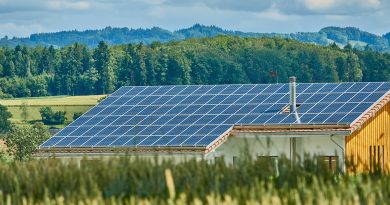Can You Mix And Match Solar panels?
The solar industry offers a variety of technologies, each with its unique advantages and challenges. For homeowners and businesses considering solar installations, the question often arises: Is it beneficial to mix different types of solar panels, such as monocrystalline, polycrystalline, and thin-film? This blog explores the complexities and benefits of combining various solar panel types within a single system.
Table of Contents
- 0.1 The Benefits and Drawbacks of Mixing Solar Panel Types
- 0.2 Factors Affecting System Performance
- 0.3 Designing a Solar System with Mixed Panel Types
- 0.4 Installation Considerations and Potential Challenges
- 0.5 The Impact of Mixed Panel Systems on System Output and Cost
- 0.6 Government Incentives and Regulations for Mixed Panel Systems
- 0.7 Case Studies of Successful Mixed Panel Installations
- 0.8 The Future of Mixed Panel Solar Systems and Their Potential Benefits
- 1 FAQ
The Benefits and Drawbacks of Mixing Solar Panel Types
Advantages:
- Flexibility in Design: Mixing panel types can optimize solar energy generation across different roof sections and lighting conditions.
- Cost Efficiency: Integrating lower-cost polycrystalline or thin-film panels with high-efficiency monocrystalline panels can balance cost and performance.
- Utilization of Space: Different panel types can be used to maximize the energy production in constrained or irregularly shaped areas.
Disadvantages:
- Complexity in System Design: Mixed systems require more complex design considerations to ensure compatibility between different electrical characteristics of panels.
- Potential for Reduced Efficiency: Mismatched electrical properties can lead to inefficiencies, reducing the overall system performance.
- Maintenance Challenges: Different degradation rates and warranties for each panel type can complicate long-term maintenance and service.
Factors Affecting System Performance
- Panel Efficiency: Each type of panel offers different efficiency levels; monocrystalline panels are typically more efficient than polycrystalline and thin-film panels.
- Wattage: Panels with different wattage ratings need to be carefully matched to optimize the power output.
- Compatibility: Voltage and current characteristics must be compatible across the system to prevent performance losses.
Designing a Solar System with Mixed Panel Types
Designing a mixed-panel system involves assessing the roof layout, sun exposure, and energy needs to determine the best combination of panel types. The design should ensure that all panels operate efficiently together, considering factors like shading, orientation, and tilt.
Installation Considerations and Potential Challenges
- Electrical Configuration: Care must be taken in wiring different panels to minimize losses. Using microinverters or power optimizers can help manage variations in output.
- Structural Load: Different panels may have varying weights and sizes, impacting roof load and mounting requirements.
The Impact of Mixed Panel Systems on System Output and Cost
- System Output: Properly designed mixed systems can optimize energy output across different conditions and times of the day.
- Cost: While initial design and setup costs may be higher, the ability to use cost-effective panels can reduce the overall system price.
Government Incentives and Regulations for Mixed Panel Systems
Many regions offer incentives for solar installations, though specifics may vary based on the system’s design and components. Understanding local regulations and incentives is crucial for maximizing benefits.
Case Studies of Successful Mixed Panel Installations
Real-world examples can illustrate how effectively designed mixed-panel systems can meet specific energy needs, adapt to environmental conditions, and optimize investment returns.
The Future of Mixed Panel Solar Systems and Their Potential Benefits
As technology advances, the feasibility and benefits of mixed-panel systems are likely to increase, offering more versatile and adaptive solutions for solar energy generation.
FAQ
Q1: Can mixing different types of solar panels void warranties? A: It can, depending on the manufacturer’s terms. Always verify warranty details with the panel manufacturers when considering a mixed setup.
Q2: How do I ensure compatibility when mixing solar panels? A: Work with a qualified solar engineer or installer who can design the system with appropriate inverters and balance the electrical characteristics of different panels.
Q3: Are there specific best practices for maintaining a mixed-panel solar system? A: Regular maintenance checks should include monitoring each type of panel for performance and degradation. Systems should be configured to easily isolate and address issues specific to each panel type.
Q4: What are the most common challenges faced with mixed-panel systems? A: Electrical mismatches, aesthetic inconsistencies, and varied degradation rates are common challenges. Proper system design and component selection can mitigate these issues.
By considering these aspects, you can better decide whether a mixed-panel solar system suits your needs, balancing performance with economic considerations for a sustainable energy solution.

